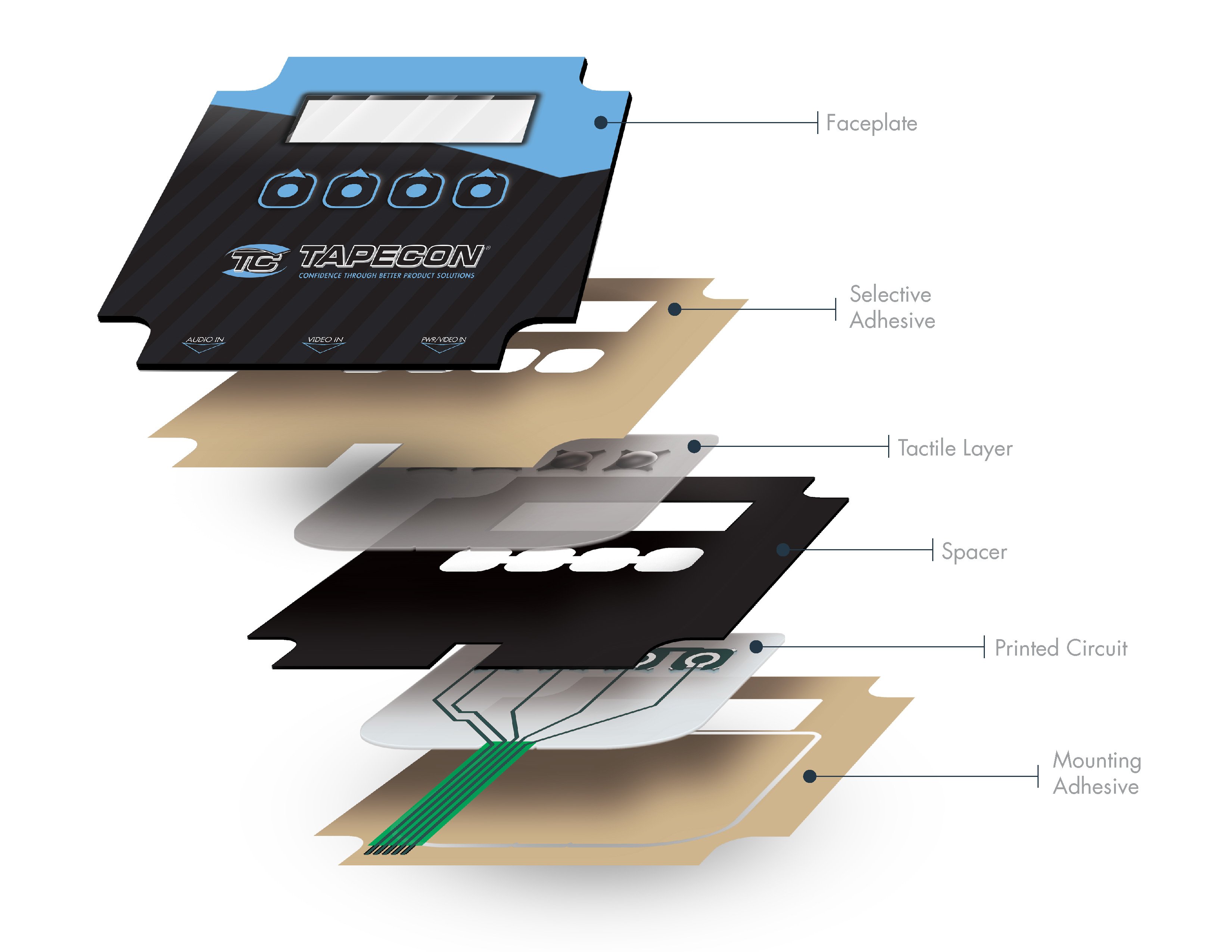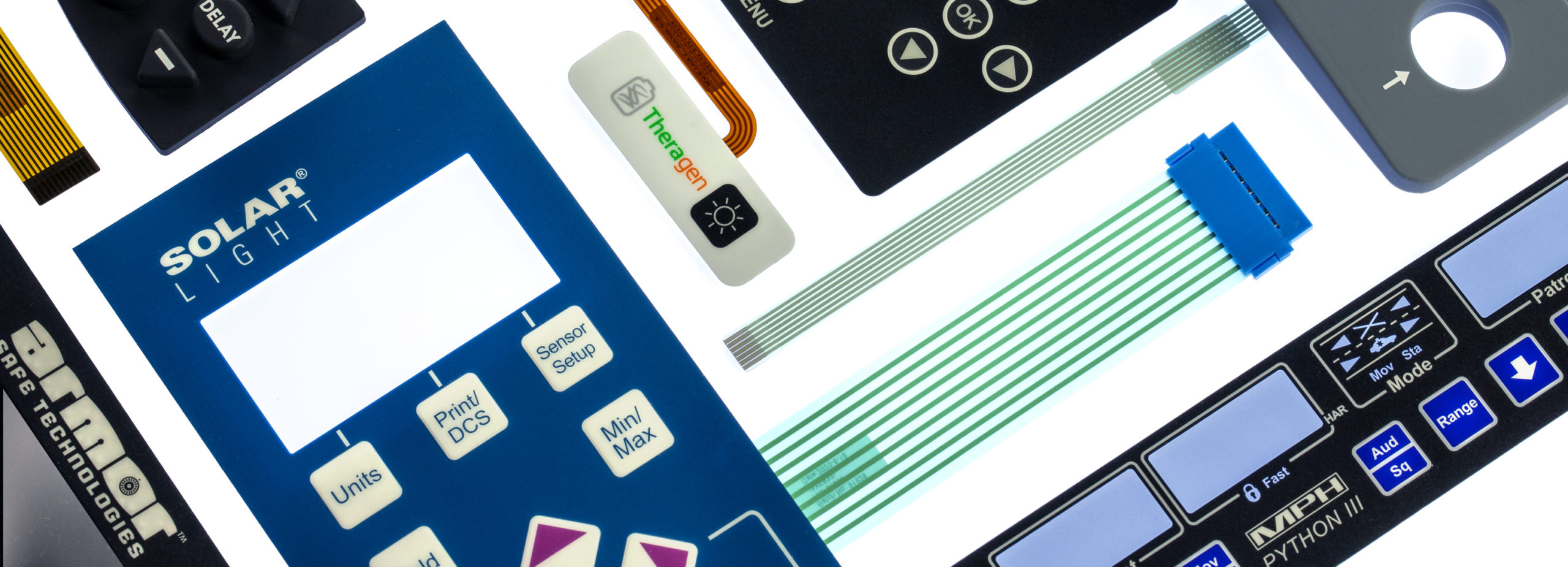Discover the Cutting-edge Manufacturing Techniques Behind Membrane Switches
Discover the Cutting-edge Manufacturing Techniques Behind Membrane Switches
Blog Article
The Ultimate Resource on Membrane Layer Changes: Layout, Capability, and Applications
Membrane switches over serve as an intriguing junction of style and capability, playing an essential role in contemporary individual interfaces across numerous markets. As we discover the varied applications of membrane layer buttons, it becomes evident that their flexibility and durability are essential in settings ranging from health care to consumer electronics.

Understanding Membrane Layer Switches
Membrane buttons are a type of interface innovation widely utilized in various digital devices, defined by their thin, adaptable layout and functionality. These buttons are composed of numerous layers that include graphic overlays, glue layers, and circuitry, making it possible for a reliable and compact user interface for users. They can be found in home appliances, clinical tools, and industrial control panels, providing a dependable method for individual interaction.
One of the primary benefits of membrane layer buttons is their capacity to resist contaminants such as dust and wetness, making them suitable for settings where sturdiness is crucial. Their low-profile design permits smooth integration into different applications, while the customizable graphic overlays boost user experience by supplying clear aesthetic comments. Additionally, membrane layer buttons can accommodate a range of modern technologies, such as tactile responses and backlighting, more enhancing their usability.
The production process for membrane changes generally entails display lamination, printing, and die-cutting techniques, making sure precision and uniformity in manufacturing. Generally, membrane switches stand for a effective and functional remedy for modern digital devices, integrating performance with visual allure in interface style.
Secret Elements and Layout Aspects
A variety of essential parts and design aspects integrated to create a reliable membrane button. At the core, the graphic overlay serves both functional and aesthetic functions, offering a straightforward interface while shielding interior parts from environmental factors. The choice of materials, commonly polyester or polycarbonate, influences sturdiness and responsive responses.
Below the overlay, the glue layer ensures the button adheres safely to the substratum, which can be steel, glass, or plastic. The spacer layer is important, as it maintains the required gap between the circuit and the overlay layers, permitting for effective actuation. Membrane Switches. Circuit traces, typically made from conductive ink or adhesive, are printed on a versatile substratum, enabling electrical signals to be sent when stress is used
Design considerations likewise consist of the setup of tactile domes or embossing that offer physical responses to the customer, enhancing the total experience. In addition, the layout and spacing of the buttons have to be enhanced for ease of use, making sure that customers can browse the interface intuitively. Generally, these components and design components work synergistically to produce a trustworthy, practical membrane button tailored to particular applications.
Capability and Operation Device
At the heart of effective capability for membrane layer switches over exists their operational system, which helps with individual interaction via a simple yet reliable design. These switches run on the principle of stress activation, where an individual uses pressure to a marked area of the switch (Membrane Switches). This activity compresses the layers of the button, finishing an electric circuit that sends a signal to the connected device
The building and construction typically includes a top visuals layer, a glue spacer layer, and a lower circuit layer, which collectively create a durable user interface. When stress is used, the leading layer collapses versus the bottom circuit layer, permitting conductive traces to link. This design not only makes it possible for clear responsive comments however also guarantees longevity and reliability, as the buttons are commonly immune to dust and wetness.
In addition, the flexibility of membrane layer switches enables combination with numerous technologies, consisting of LED indications and microcontrollers, enhancing their functionality. By supplying a streamlined user interface that decreases mechanical wear, membrane layer switches stay a preferred selection in applications ranging from consumer electronic devices to commercial devices, making sure ideal efficiency and individual satisfaction across varied settings.
Kinds of Membrane Layer Buttons

An additional considerable group is lit up membrane layer switches, which include backlighting to improve visibility in low-light conditions. These buttons are commonly utilized in control panels and control panels where clear presence is necessary.
Moreover, there are custom membrane switches designed to meet specific dimensional, graphical, and useful requirements. These modifications can consist of special shapes, colors, and designs, permitting smooth assimilation into various devices.

Applications Across Various Industries
How do membrane layer switches enhance performance across varied sectors? These flexible components are indispensable to countless applications, providing structured individual interfaces and robust efficiency. In the medical sector, membrane switches play a critical duty in tools such as diagnostic tools and person tracking systems, where description dependability and ease of cleansing are critical. Their capacity to hold up against extreme settings makes them perfect for research laboratory tools and medical tools.
In the automotive sector, membrane switches are commonly utilized in control panels and control panels, offering instinctive controls that improve driver security and ease. The consumer electronics market additionally takes advantage of their lightweight and adjustable functions, allowing sleek designs for mobile phones and home appliances.
In addition, membrane buttons discover applications in industrial automation, where they contribute to efficient machinery procedure and monitoring systems. Their resistance to dust and moisture makes certain performance popular problems (Membrane Switches). In addition, the food and drink market uses membrane layer buttons for devices control, where hygiene and sturdiness are important
Conclusion
In verdict, membrane layer switches represent a crucial technology in individual interface innovation, characterized by their distinct design and functionality. The flexibility of membrane layer switches facilitates their application across diverse industries, from clinical devices to customer electronics.
Membrane layer changes serve as an intriguing crossway of style and performance, playing a pivotal function in modern-day individual interfaces across various industries.Membrane layer switches are a type of user interface innovation widely used in numerous digital tools, characterized by their thin, adaptable layout and functionality.At the heart of effective functionality for membrane layer switches over lies their functional mechanism, which assists in individual communication with a basic yet effective layout. These buttons operate on why not check here the concept of pressure activation, where a customer applies force to an assigned area of the button.In conclusion, membrane switches over represent a vital development in customer interface technology, characterized by their one-of-a-kind design and capability.
Report this page